Tulipa
("Tulip")

Origins:
The genus's native range ranges from as far West as Southern Europe, North Africa, Anatolia and Iran to the Northwest of China. The tulip's centre of diversity is in the Pamir, Hindu Kush and Tien Shan mountains. Although tulips are nowadays often associated with The Netherlands, commercial cultivation of the bulbs and flowers began during the Ottoman Empire. The name is ultimately derived from the Persian 'dulband' (turban). These days it is by far the most popular bulbous plant. Tulips are to Holland what champagne is to France: a national treasure. Cultivated there since the end of the 16th Century, tulips are grown by the billions (capital B) today, with the majority of them being exported either as bulbs or as cut flowers. Currently there are more than 3,000 cultivated varieties registered, with more being added (after sometimes years of hybridizing- and selection-procedures) to replace older varieties or to introduce yet another brand new type or color combination.
Planting Tips:
The most important thing for tulips is loose, well drained soil. They prefer humus-rich, sandy soil but will grow in any good garden soil provided you water them well right after planting and plant them in a location where they will get 5-6 hours of sunlight a day. In very cold climates it is advisable to apply a mulch before Winter sets in. If they are grown as annuals (planting new bulbs every year) no additional fertilizer is needed. However if you want to leave the bulbs in the ground (let them naturalize) you should apply a slow release fertilizer as soon as they start to come up in the Spring and again the following Fall to keep the bulbs vigorous. It is also important to only cut off the flower-heads once they have faded but leave the stem and all the foliage to die back naturally (restoring food into the bulbs for next year's flowers). PLANTING IN POTS AND CONTAINERS: Your container should be at least 12" (30 cm) deep (to allow for proper planting depth and safeguard their development) and have sufficient drainage holes in the bottom (or near the bottom on the sides). Add clay granules or pot shards in the bottom to improve drainage then add ordinary potting soil mixed with 1/3 sharp sand or light garden soil. Fill the container up to about 6'' (15 cm) below the rim, arrange the bulbs so that they almost touch each other (for massive color effect), press the bulbs carefully into the soil (pointed ends up) and add soil up to 1/2" (1 cm) below the rim. Don't forget to add water during dry spells when temperatures are above freezing. You can plant Winter pansies, forget-me-nots or ornamental cabbage on top of the tulips to keep the containers more attractive for a longer time. (When the frost has killed off those plants or as the tulips start to emerge, trim those over-plantings back, do not pull them out as this could damage the bulbs). Tulips can suffer damage from extremely low temperatures when the cold penetrates the containers from all sides. So if you expect a really hard freeze find a temporary site where the frost will not set in. You can also wrap containers in plastic bubble-wrap if they are too big to move or if you do not have a frost-free space. Cover the soil in any case with straw, reeds or leaves. Of course you can also add some daffodils or hyacinths instead of filling the container totally with tulips alone: this will extend the flowering time by quite a bit as well you will have more choices of color combinations to choose from.
Flowers in the Tulipa Family
-
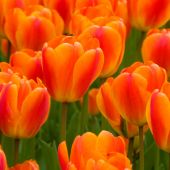 Tulipa Darwin Hybrid
Tulipa Darwin Hybrid
-
 Tulipa Double Early
Tulipa Double Early
-
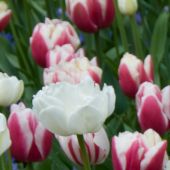 Tulipa Double Late
Tulipa Double Late
-
 Tulipa Fosteriana
Tulipa Fosteriana
-
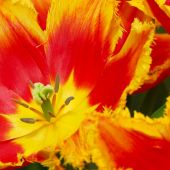 Tulipa Fringed
Tulipa Fringed
-
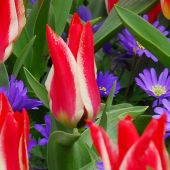 Tulipa Greigii
Tulipa Greigii
-
 Tulipa Kaufmanniana
Tulipa Kaufmanniana
-
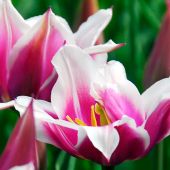 Tulipa Lily-flowered
Tulipa Lily-flowered
-
 Tulipa Miscellaneous
Tulipa Miscellaneous
-
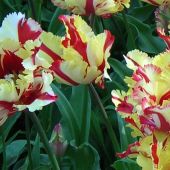 Tulipa Parrot
Tulipa Parrot
-
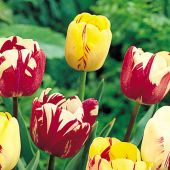 Tulipa Rembrandt
Tulipa Rembrandt
-
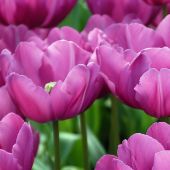 Tulipa Single Early
Tulipa Single Early
-
 Tulipa Single Late
Tulipa Single Late
-
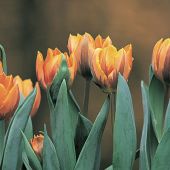 Tulipa Triumph
Tulipa Triumph
-
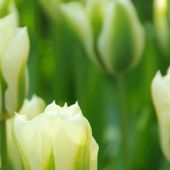 Tulipa Viridiflora
Tulipa Viridiflora



